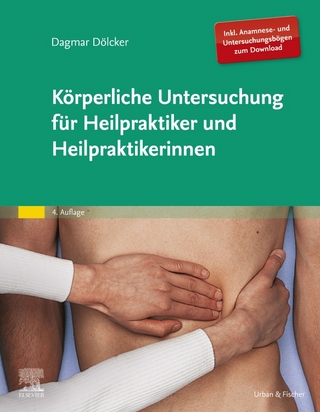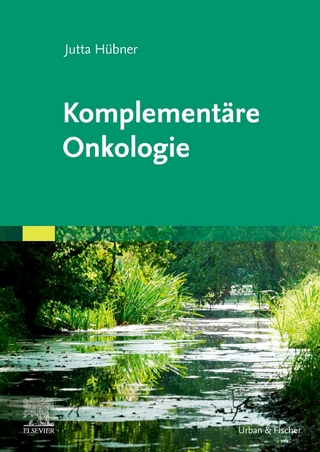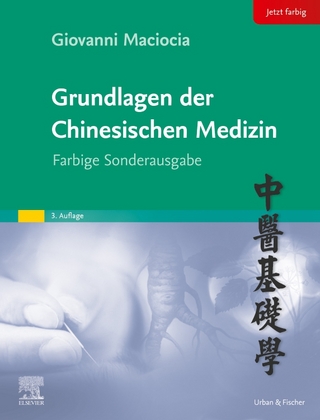
The Healing Power of Chinese Herbs and Medicinal Recipes
Routledge (Verlag)
978-0-7890-2201-1 (ISBN)
The Healing Power of Chinese Herbs and Medicinal Recipes is an easy-to-follow introduction to the history of traditional Chinese phytomedicine. This useful guide clearly explains the basics of this unique medical system and describes in detail the therapeutic properties and use of medicinal herbs and herbal recipes. The book includes a bibliography, glossary, contact information for herbal dealers and Oriental medicine schools, and an indexed list of 300 commonly used Chinese medicinal herbs and 245 herbal recipes.
In The Healing Power of Chinese Herbs and Medicinal Recipes, you will find the fundamentals, evolution, and development of the herbal formulas of the 4,000-year-old Oriental Materia Medica, also known as ben cao. The book contains 11 sections documenting the therapeutic applications, dosages, precautions, and modern research findings of 138 of the most popular medicinal herbs. In addition, this resource provides 101 of the most frequently prescribed master recipes by famous ancient physicians, including their origin, ingredients, actions, indications, and modern clinical uses.
The Healing Power of Chinese Herbs and Medicinal Recipes offers an in-depth education on:
tonic herbs
herbs that adjust the yin and yang of the body
herbs that invigorate circulation of vital energy, qi, and blood
herbal tranquilizers
herbal diaphoretics
herbal expectorants, antitussives, and antiasthmatics
herbal pain killers
herbs which regulate digestion and elimination
herbal diuretics
herbal antipyretics, antimicrobials, and detoxicants
antitumor herbs
The Healing Power of Chinese Herbs and Medicinal Recipes provides up-to-date information on the effectiveness of traditional Chinese medicine, as well as how to use Chinese medicinal herbs in conjunction with Western conventions. This comprehensive reference will benefit healthcare practitioners who want to include Oriental medicine in their practice, and anyone who is interested in Chinese herbs or patients for whom conventional medicine has offered no relief.
Joseph P. Hou, Youyu Jin
Foreword (Zhou Jinhuang)
Preface
Acknowledgments
Guide to Chinese Pin Yin Phonetics and the Wade-Giles System
Authors’ Note
Introduction: Western Medicine versus Traditional Chinese Medicine
Modern (Synthetic) Medicine versus Herbal (Natural) Medicine
The Healing Benefits of Chinese Herbs
The Future of Chinese Herbal Medicine
PART I: THE MYTH AND TRUTH ABOUT CHINESE MEDICINE
Chapter 1. The Fundamentals of Chinese Medicine
Early Medical Philosophy
The Essence of Chinese Medicine
Methods of Diagnosis and Differentiation of Syndromes
Treatment Methods
Chapter 2. The Development of Ben Cao and Herbal Recipes
The Evolution of Ben Cao
The Evolution of Herbal Recipes
PART II: THE PRACTICALITIES OF CHINESE HERBAL REMEDIES
Chapter 3. Practical Herbalism
The Benefits of Medicinal Herbs
Practical Herbalism
How Medicinal Plants Are Processed
Chemical Components of Medicinal Plants
Properties of Medicinal Herbs
Dosage of Herbs
Factors That Influence the Efficacy of Herbs
How Chinese Medicinal Herbs Are Used
Chapter 4. Effective Herbal Recipes and Patent Medicines
Herbal Recipes (Formulas, Prescriptions)
How Herbal Recipes Are Modified
Patent Medicines and Modern Pharmaceutical Herbal Preparations
Quality Control and Good Manufacturing Practices (GMP) of Herbal Products
Where to Buy Chinese Herbs and Patent Medicines
PART III: THE HEALING POWERS OF MEDICINAL HERBS, PAST AND PRESENT
Chapter 5. Miraculous Tonic Herbs: Strengthening the First Line of Defense and Fortifying the Immune System
Ginseng Root; Radix ginseng; Ren shen
Siberian Ginseng; Radix Acanthopanax senticosus; Wu jia shen or Ci wu jia
Astragalus Root; Radix Astragali; Huang qi
Codonopsis; Radix Codonopsis Pilosulae; Dang shen
Licorice Root; Radix Glycyrrhizae; Gan cao
Chinese Yam; Rhizoma Dioscoreae; Shan yao
Schisandra Fruit; Fructus Schisandra; Wu wei zi
White Atractylodes; Rhizoma Atractylodis Macrocephala; Bai zhu
Chinese Angelica Root; Radix Angelica sinensis; Dang gui, Tang kuei, Dong quai
Processed Rehmannia Root; Radix Rehmanniae Preparata; Shu di huang or Shu di
White Peony Root; Radix Paeoniae Alba; Bai shao
Polygonum; Radix Polygoni multiflori; He shou wu or Shou wu
Chapter 6. Herbs That Adjust the Yin and Yang: Defending Homeostasis and Harmony of the Body
American Ginseng; Radix Ginseng Quinquefolium; Xi yang shen or Hua qi shen
Ophiopogon Root; Radix Ophiopogonis; Mai men dong or Mai dong
Lycium Fruit; Fructus Lycii; Gou qi zi
Polygonatum Root; Rhizoma Polygonati; Huang jing
Glehnia; Radix Glehniae; Bei sha shen
Asparagus; Radix Asparagi; Tian men dong or Tian dong
Epimedium; Herba Epimedii; Yin yang huo or Xiang ling pi
Eucommia Bark; Cortex Eucommiae; Du zhong
Psoralea Fruit; Frutus Psoraleae; Bu gu zhi
Cordyceps; Cordyceps sinensis; Dong chong xia cao
Morinda Root; Radix Morindae officinalis; Ba ji tian
Cistanche; Herba Cistanches; Rou cong rong
Cuscuta; Semen Cuscutae; Tu si zi
Cornus; Fructus Corni; Shan zhu yu
Curculigo Rhizome; Rhizoma Curculiginis; Xian mao
Pilose Antler; Cornu Cervi Parvum; Lu rong
Chapter 7. Herbs That Invigorate Circulation of Vital Energy, Qi, and Blood: Preventing Discomfort and Pain, and Cerebral and Coronary Heart Diseases
Tangerine (Orange) Peel; Pericarpium Citri Reticulatae; Chen pi
Immature Bitter Orange; Fructus Aurantii Immaturus; Zhi shi
Cyper
| Erscheint lt. Verlag | 25.4.2005 |
|---|---|
| Verlagsort | New York |
| Sprache | englisch |
| Maße | 156 x 216 mm |
| Gewicht | 1720 g |
| Themenwelt | Sachbuch/Ratgeber ► Gesundheit / Leben / Psychologie ► Alternative Heilverfahren |
| Medizin / Pharmazie ► Naturheilkunde ► Phytotherapie | |
| ISBN-10 | 0-7890-2201-X / 078902201X |
| ISBN-13 | 978-0-7890-2201-1 / 9780789022011 |
| Zustand | Neuware |
| Haben Sie eine Frage zum Produkt? |
aus dem Bereich


